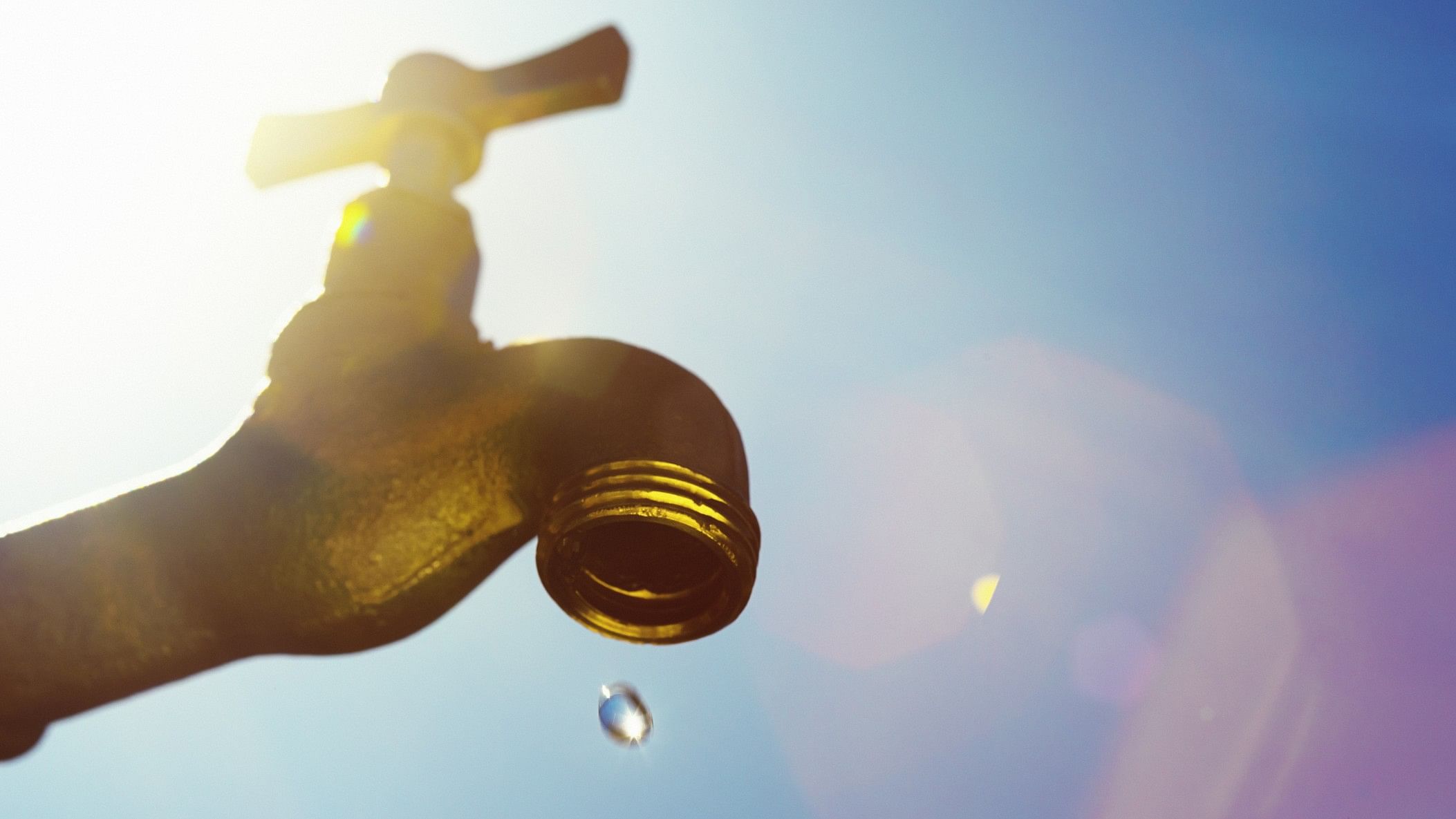
Representative image
Credit: iStock Photo
Chandigarh: Haryana minister Abhe Singh Yadav on Thursday said the water scarcity in Delhi was solely due to "internal mismanagement" by the AAP dispensation.
Yadav dismissed as "baseless" and "beyond facts" the Delhi government's allegation that the BJP-ruled state is not providing the national capital with the required share of water, as he asserted that Haryana is currently supplying 1,050 cusecs of water to Delhi, exceeding the mandated allocation of 719 cusecs.
Yadav, the Minister of State for Irrigation and Water Resources, while speaking in Delhi, said Haryana does not politicise water issues, viewing water as a fundamental necessity.
The minister underscored that ensuring water supply to the national capital is a collective responsibility, one which Haryana fulfils without shortfall. Yadav, according to an official statement, said that in response to AAP government's petition filed before the Supreme Court recently, the Haryana government submitted data on its water supply to Delhi contact point, Bawana.
"The data covers the period from May 23 to June 12, 2024, revealing that Haryana consistently released 1,050 cusecs of water at Munak Head for Delhi. Additionally, more than 924 cusecs of water, as stipulated by the UYRB (Upper Yamuna River Board), was supplied to the Bawana point," he said.
Yadav stated that despite admitting to receiving their full water supply in official meetings, the Delhi government presents misleading and exaggerated figures in the media and political platforms.
Yadav, who was accompanied by Pankaj Agarwal, Commissioner and Secretary of the Irrigation Department, Haryana, and other officials from the state, said Haryana is consistently providing Delhi with its allocated water supply, substantiating his claim with specific figures.
"Delhi has been demanding 613 MGD (1,141 cusecs), which exceeds the figures specified by the Upper Yamuna River Board in its report (1,011 cusecs at Munak and 924 cusecs at Bawana)," the Haryana minister said.
"Even the letter of Delhi Jal (Water) Minister has admitted that Delhi is getting 513 MGD or 954 cusecs of water on 18th June 2024 which confirms the fact that Haryana has always given full water share to Delhi and any water shortage in Delhi is only due to internal mismanagement of Delhi itself," he claimed.
He also criticised the Delhi government, accusing it of engaging in "political drama over water issues instead of addressing internal mismanagement".
The minister alleged that the Delhi government has persistently levied unfounded accusations of receiving inadequate water from Haryana over the past several years, and each time, Haryana has substantiated that these claims are without merit.
It has become routine for the Delhi government to dramatise water-related issues, while Haryana consistently handles water matters fairly and transparently, he said.
Yadav asked whether the Delhi government acknowledges that Haryana consistently provides Delhi with its full allocated share of water.
Secondly, he questioned why Delhi, despite the Supreme Court's decision on June 6 directing the release of 137 cusecs of additional water to Himachal Pradesh, is not seeking water from Himachal Pradesh and instead insisting on water from Haryana, he said.
He mentioned that Delhi Water Minister Atishi sent a letter to the Haryana Chief Minister Nayab Singh Saini on May 22, asserting that Haryana's water release was inadequate to maintain the required pond level at Wazirabad.
"Before Haryana could formally respond to this communication, they filed a writ petition before the Supreme Court on May 31, 2024, seeking directions for Haryana to immediately and continuously release water at the Wazirabad barrage," he said.
Yadav said that during the court proceedings on June 3, the Supreme Court instructed the Upper Yamuna River Board to convene an emergency meeting on June 5.
At this meeting, known as the 62nd emergency meeting of the UYRB, all participating states agreed that the average flow at Delhi contact point, Bawana, throughout May was approximately 948 cusecs. This flow rate exceeded the previous decision of 924 cusecs set by the Board in its 52nd meeting, he said.
Yadav explained that according to the UYRB decision in its 52nd meeting, Haryana was mandated to release 1,011 cusecs of water at Munak for Delhi to receive 924 cusecs at Delhi contact point, Bawana.
However, Haryana has consistently been releasing 1050 cusecs of water at Munak for Delhi, he said.
During the hearing of the petition, UYRB conducted a measurement at Bawana point on June 9, confirming that Delhi was receiving 961 cusecs of water at that time. Despite this, on the same day, the Delhi Water Minister sent another letter to the Haryana Chief Minister, alleging inadequate water supply.
Yadav highlighted that various independent agencies have verified Haryana's water supply data, confirming its accuracy.
He asserted that no agency has ever accused Haryana of supplying less water than mandated.
He pointed out that Haryana faces a shortfall of 10 to 15 percent in water supply through the Yamuna river and Western Yamuna Canal (WJC) system. Despite these challenges, the state has implemented various schemes on the ground to maximise the efficient use of available water resources and address the state's water shortages effectively, he added.